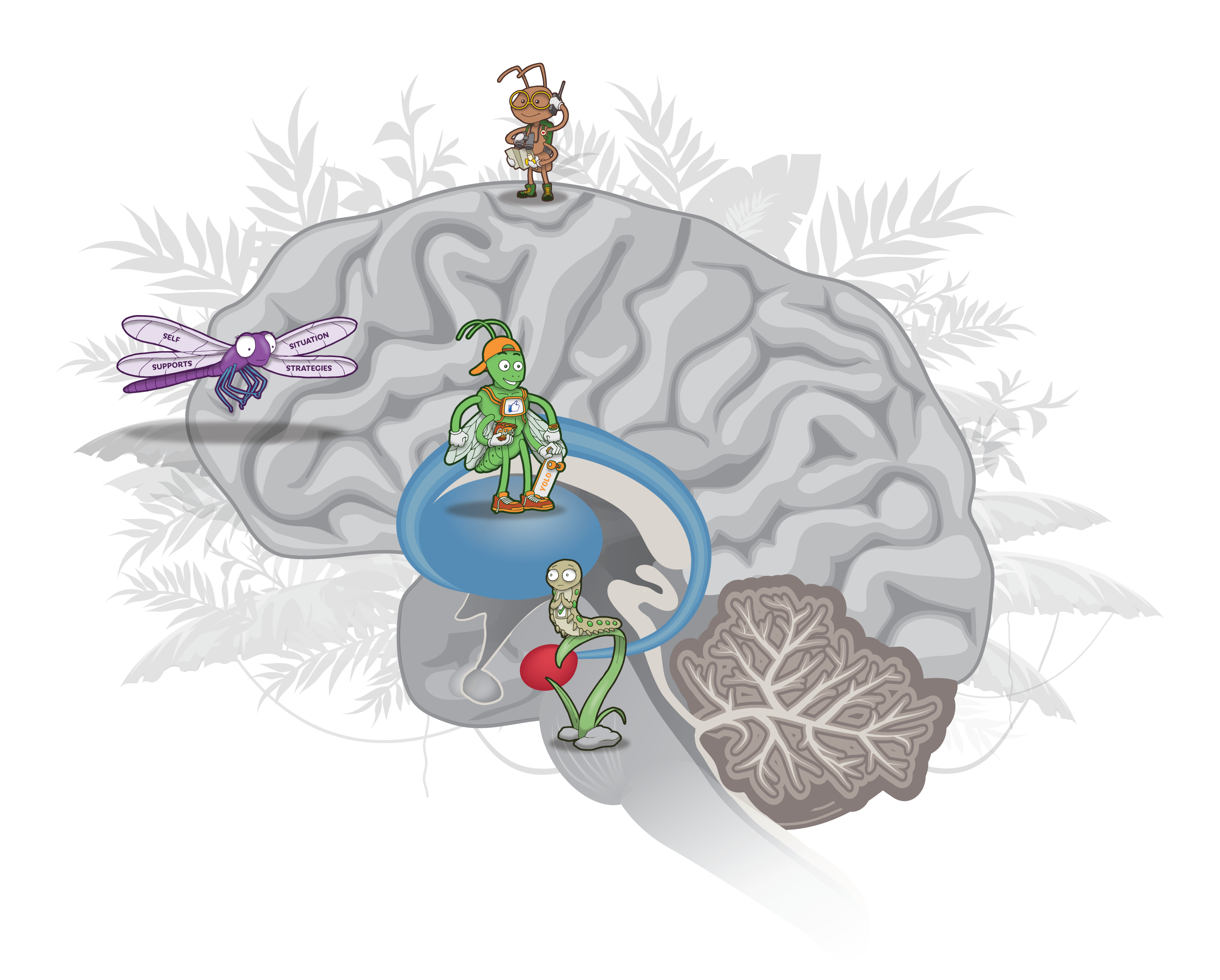“Use your brain!”
Come on, we have all said it at one time or another when our kids are not making the best of choices. And sometimes, those choices are pretty unbelievable. But, the truth is, we cannot expect our kids to use their brains unless they learn how.
The more that I learn, the more aware I am that we seem to be heading in the wrong direction. Teens and young adults today are experiencing anxiety, depression, and suicide at rates that are unprecedented. Given that I have four kids heading toward that demographic, it is something I struggle with every day. How do we, as parents, help protect them? I am convinced that the answer lies in understanding the brain science.
For the past 6 years, my goal has been to create a model to help people understand the most powerful tool that they already own: their brains. Yup, that’s right, a kind of users manual for the brain. It is called The Resilient Mindset Model.
Here is a brief overview:
Creating Resilient Brain Pathways: The Four Ss
Our brains offer us an amazing opportunity: we get to choose the pathways that we create. The brain is particularly open to change through the adolescent years, so when kids are young, we can use challenges as opportunities to develop resilient brain pathways by guiding them as they learn to problem-solve through challenges. The brain likes consistency and predictability, so in order to help develop those resilient pathways, it helps to use a consistent framework. In the model, we use the Four Ss of resilience: self, situation, supports and strategies as a framework to prepare for, hande, and reflect on any challenge.
Mindful Response: The Four Characters
Our brains are hard-wired to survive and having an understanding of how that hard-wiring works allows us to begin to make more mindful choices about how we respond when we face challenges. The four characters in the model give an overview of that hard wiring (see the vidual above): when we face any threat, our amygdala (glowworm) is in charge of switching control of the brain from the cortex (ant), which is in charge of our long-term choices, to the limbic system (grasshopper), which is in charge of our fight-flight-or-freeze survival mode. This process happens the same way if we experience social threats (fear of being left out) as it does when we experience physical threats (a car coming at us). Knowing this process gives us the ability to be more mindful about our response (dragonfly).
Thriving: The Ant’s Tools
In the model, the ant carries 7 tools that respresent the things that we need to keep our cortex healthy: rest, social connections, good nutrition, exercise, learning frameworks, focus, and opportunities to experience pride, gratitude and compassion. When we have these in place, we are better able to make decisions that benefit us in the long run (like putting money in the bank, going to the doctor, and ordering that healthy lunch).
Understanding Neurochemicals
One of my favorite things to tell parents is, “Self-esteem is not a gift that you can give your kids, it is a neurochemical response that you rob them of everytime you do something for them that they can do themselves.” There are certain neurochemicals that are needed for healthy brain development, and when we kids do not get them in healthy ways, they turn to unhealthy habits. When we understand those neurochemical needs (really, they can be pretty simple), we are better able to make more mindful choices about how we encourage our kids to get them (often by staying out of the way of their natural development).
Now, I am not saying that raising kids is easy once you know the brain science. I can guarantee that it is not. As I said, I struggle every day. However, the brain science has given me a way to talk to my kids about that struggle, and has definitely helped guide the decisions that I make. And, heh, they never said it was gonna be easy.


